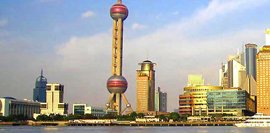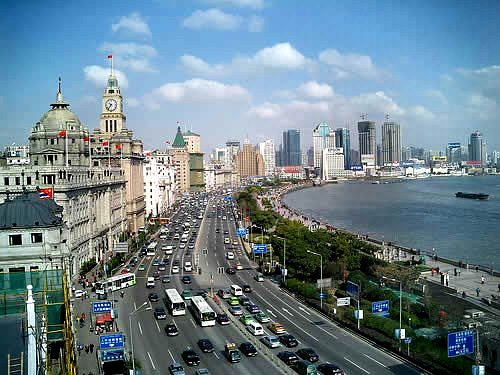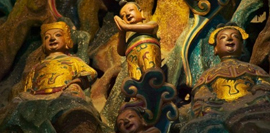Shanghai, with so many business people rushing in, is not only China's economic and cultural center, but also a "Grand View Garden" for dinners of all tastes. In fact, Shanghai does not have a definitive cuisine of its own, but refines those of the surrounding provinces. Different styles of cuisine meet and merge in Shanghai only to create the so-called Shanghai style cuisine, influenced by Beijing cuisine, Yangzhou cuisine, Guangdong cuisine and Sichuan cuisine, together with the foods of  Suzhou, Wuxi, Ningbo and Hangzhou flavors, making Shanghai an ideal "gourmet kingdom".
Suzhou, Wuxi, Ningbo and Hangzhou flavors, making Shanghai an ideal "gourmet kingdom".
The name "Shanghai" means "above the sea", but paradoxically, the local preference for fish often tends toward the freshwater variety due to the city's location at the mouth of China's longest river. Seafood, nonetheless, retains great popularity and is often braised (fish), steamed (fish and shellfish), or stir-fried (shellfish). Watch out for any seafood that is fried, as these dishes rely far less on freshness and are often the remains of weeks' old purchases.
Shanghainese people are known to eat in delicate portions (which makes them a target of mockery from other Chinese), and hence the servings are usually quite small. For example, famous buns from Shanghai such as the xiaolong mantou (known as xiaolongbao in Mandarin) and the shengjian mantou are usually about four centimeters in diameter, much small than the typical baozi or mantou elsewhere. And the vegetarian stuffed bun is stuffed with finely chopped green vegetables, mushrooms, bamboo shoots and marinated bean curd with sesame oil and sugar as the condiments. Due to the rapid growth of Shanghai and its development into one of the foremost East Asian cities as a center of both finance and contemporary culture, the future of Shanghai cuisine looks very promising.






